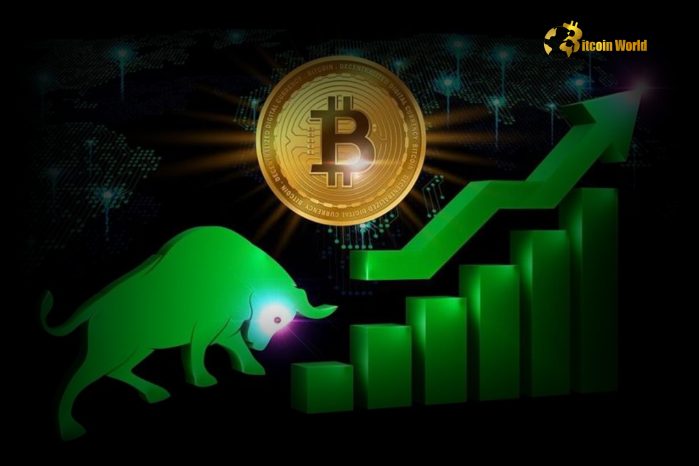Bitcoin Rally Fueled by Post-Halving Supply Shock, Says Onramp’s Jesse Myers
Bitcoin’s (BTC) recent rally can be attributed to a post-halving supply shock, rather than political developments like the recent U.S. presidential election, according to Jesse Myers, co-founder of Onramp Bitcoin. Myers points to the impact of April’s halving, which cut Bitcoin’s block rewards in half, leading to a reduced supply of new BTC entering the market. This scarcity has created a supply shock that has driven up demand, as Bitcoin’s supply constraints make it increasingly valuable at current price levels.
Myers and other analysts highlight the significance of Bitcoin’s four-year halving cycle, noting that this mechanism plays a central role in its price behavior. This latest halving has limited Bitcoin’s supply, supporting a bullish market outlook as demand for the asset continues to grow.
Understanding the Post-Halving Supply Shock
Bitcoin’s halving events occur approximately every four years, reducing the reward that miners receive for validating transactions by half. In April 2024, the most recent halving reduced the block reward from 6.25 BTC to 3.125 BTC. This decrease in the rate at which new Bitcoin enters circulation tightens supply, creating a scarcity effect known as a post-halving supply shock.
The limited supply of newly minted BTC pushes prices higher, especially when demand remains strong. Myers explains that this dynamic is central to Bitcoin’s price cycle and helps fuel rallies that typically follow each halving. The post-halving period often sees increased market activity as buyers compete for a smaller pool of available BTC, driving prices upward.
Bitcoin’s Four-Year Halving Cycle and Its Impact on Prices
Bitcoin’s four-year halving cycle is one of the primary factors influencing its long-term price trends. This cycle creates predictable periods of supply reduction, followed by increased demand as investors anticipate price growth. The effect of each halving is cumulative, with each reduction in supply having an outsized impact on Bitcoin’s overall scarcity.
Historically, Bitcoin’s price has surged in the months following each halving event:
- 2012 Halving: BTC’s price rose dramatically in the year following its first halving, establishing its value as a scarce asset with limited supply.
- 2016 Halving: The second halving led to a prolonged rally, culminating in Bitcoin’s peak during the 2017 bull run.
- 2020 Halving: This event set the stage for Bitcoin’s historic run to over $60,000 in 2021, as a new wave of institutional investors entered the market.
With each halving, Bitcoin’s supply becomes more limited, reinforcing its appeal as a digital store of value. The post-halving supply shock is a recurring phenomenon that has become an expected part of Bitcoin’s price cycle, driving sustained interest and growth.
Analysts Highlight Bitcoin’s Scarcity Relative to Gold
Myers and other analysts point to Bitcoin’s scarcity as a key differentiator from traditional assets like gold. Unlike gold, which has an inflationary supply due to ongoing mining, Bitcoin’s supply is capped at 21 million BTC, with the halving mechanism ensuring a steady reduction in new supply. This feature positions Bitcoin as “digital gold” and makes it increasingly attractive as a store of value, particularly in times of economic uncertainty.
Bitcoin’s fixed supply and predictable scarcity make it a hedge against inflation, drawing interest from both retail and institutional investors. With this latest halving, Bitcoin’s supply inflation rate is now lower than that of gold, enhancing its appeal to investors looking for alternatives to traditional assets.
Post-Halving Demand and Market Sentiment
The post-halving period often brings increased attention to Bitcoin, as the scarcity effect drives demand among investors who recognize the opportunity for price appreciation. Current market sentiment is largely optimistic, with analysts expecting further gains as Bitcoin’s supply shock takes hold.
While political developments can impact market sentiment, Myers emphasizes that Bitcoin’s halving cycles have a more substantial, predictable effect on its price. By aligning with Bitcoin’s intrinsic supply mechanics, investors and traders can better anticipate market cycles, reducing the impact of short-term events and focusing on long-term trends.
What This Means for Bitcoin’s Future Price Potential
The post-halving supply shock could set Bitcoin on a trajectory for continued price gains, as market conditions support its role as a scarce asset. As demand for Bitcoin increases, its price could benefit from a positive feedback loop where rising prices attract new buyers, creating sustained upward momentum. Other analysts suggest that Bitcoin’s scarcity could eventually position it as a preferred store of value, competing with traditional assets like gold.
While Bitcoin remains volatile, its underlying scarcity and the impact of halving cycles are factors that add stability and predictability to its long-term outlook. Analysts continue to monitor these cycles to forecast future price trends, with many expecting that Bitcoin will continue to see gains in the months following each halving.
Conclusion
According to Jesse Myers, Bitcoin’s latest rally is primarily driven by a post-halving supply shock that has limited new BTC supply, increasing demand and pushing prices higher. With each halving event, Bitcoin’s scarcity becomes more pronounced, enhancing its appeal as a store of value and hedge against inflation. As the effects of this year’s halving continue to unfold, Bitcoin’s future price potential remains optimistic, backed by a proven supply cycle that underpins its value as a scarce digital asset.
For a deeper dive into Bitcoin’s halving cycles and their impact on the market, check out our article on Bitcoin Halving Explained, where we explore how these events influence long-term price trends.
Disclaimer: The information provided is not trading advice, Bitcoinworld.co.in holds no liability for any investments made based on the information provided on this page. We strongly recommend independent research and/or consultation with a qualified professional before making any investment decisions.

